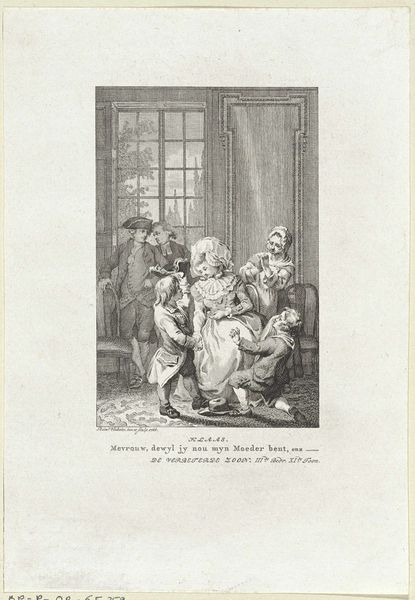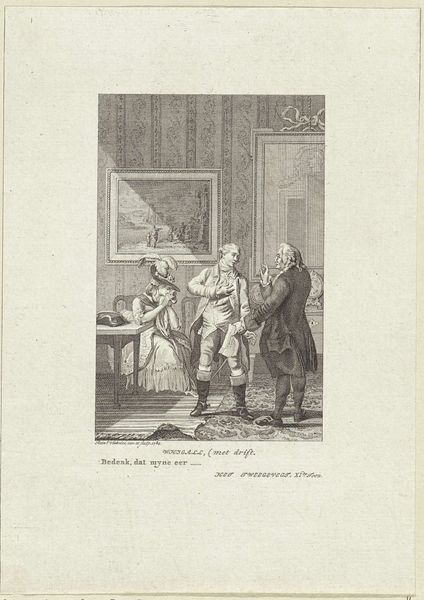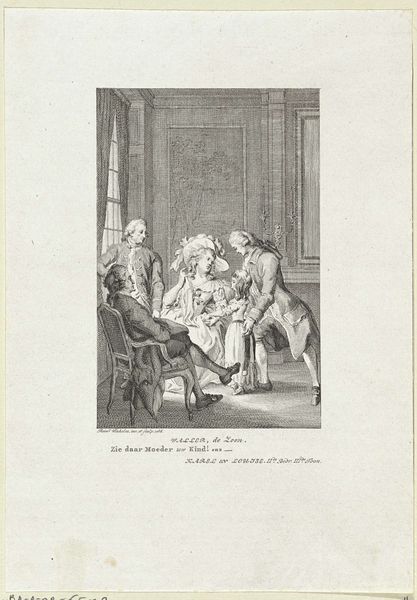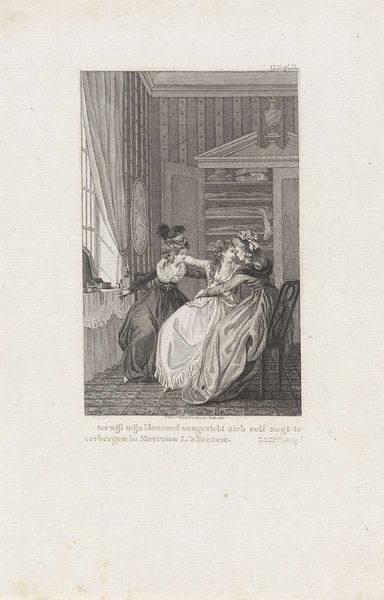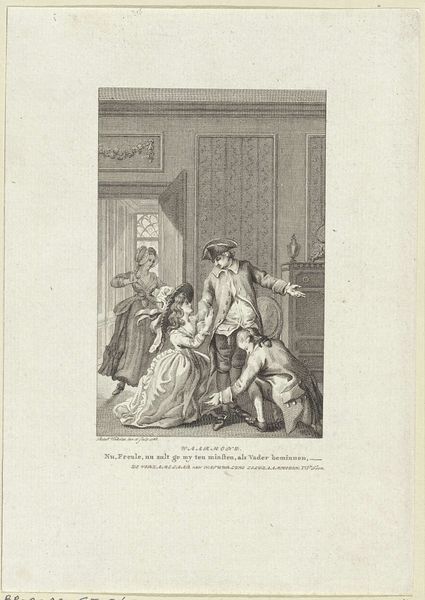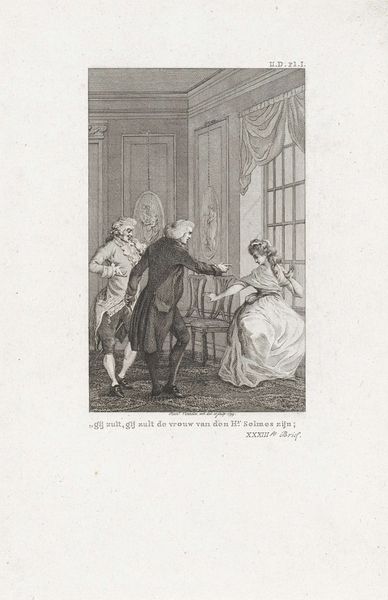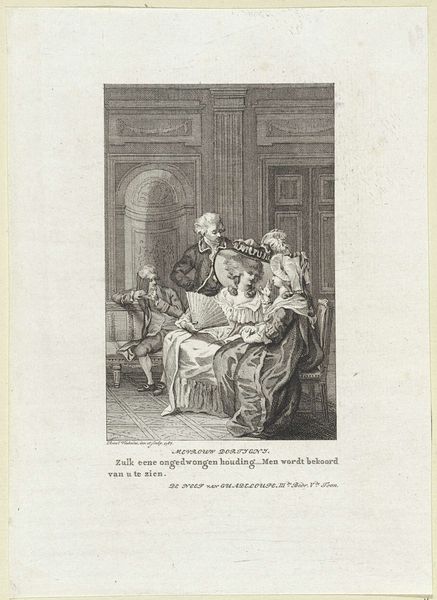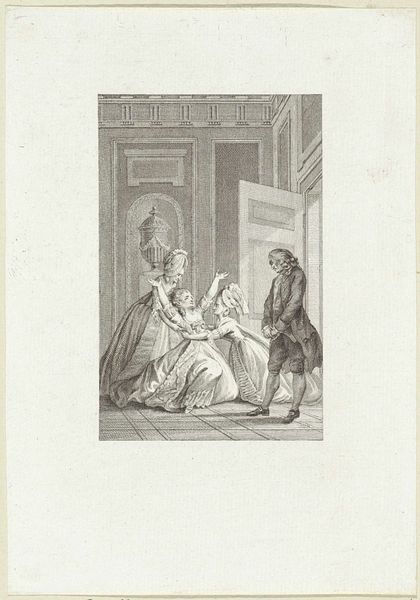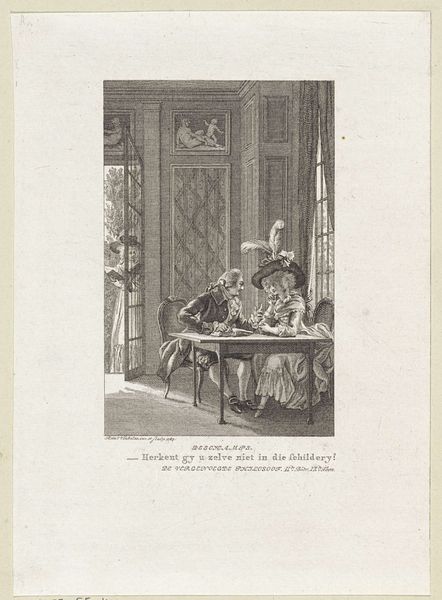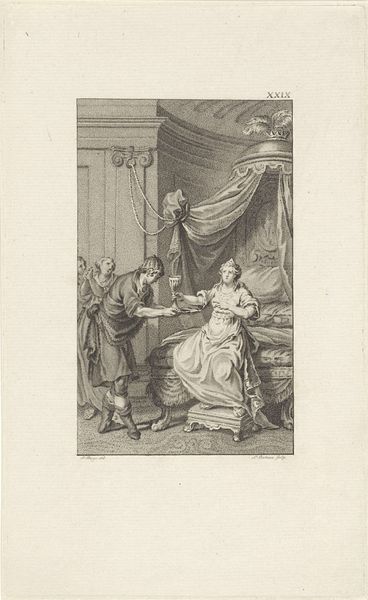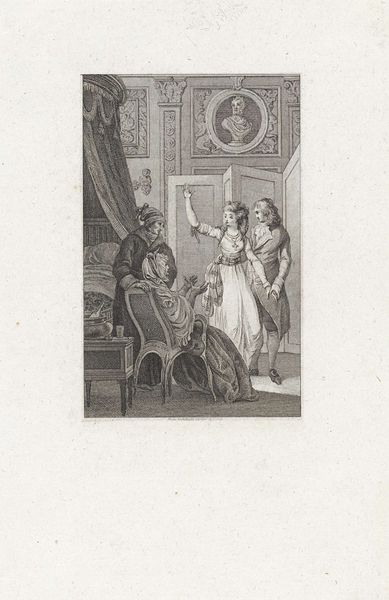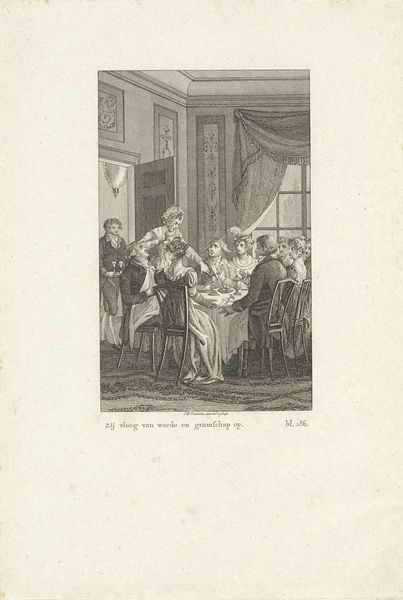
print, engraving
#
neoclassicism
# print
#
old engraving style
#
genre-painting
#
engraving
Dimensions: height 241 mm, width 159 mm
Copyright: Rijks Museum: Open Domain
Curator: This engraving, currently housed in the Rijksmuseum, is entitled "Vrolijke jonge echtgenoten in gesprek met een man," depicting a conversation between a young couple and an older gentleman. Reinier Vinkeles created this scene sometime between 1751 and 1816. Editor: There's a certain domesticity conveyed in this print, but it's laced with something else… a bit of nervousness, perhaps? The man standing places his hand over his heart, and the seated woman has a distinct look of worry, yet the space feels safe with its classic Neoclassical architecture. Curator: Absolutely, and those gestures hold quite a bit of weight in the language of art during this era. The hand over the heart might denote sincerity or even surprise, linking to codes of social presentation for men. The woman, though, registers anxiety, but what is the trigger of their expressions? Consider how the arrangement, the shared act of sitting down with tea implies the cultural expectation of shared intimacy of familial life, and yet a clear power imbalance exists. Editor: The tea set, the furniture, all point to a level of wealth and comfort. I'm drawn to the detail in the man's clothing, specifically how the fine texture of the cloth is suggested using only thin engraved lines. It speaks to the engraver’s skill in capturing such nuanced material qualities with the printing press. Curator: The image almost feels staged; a perfect tableau, even. I wonder if it's intended to carry a moral lesson, the characters serving as symbols representing particular states of mind or social types caught at a critical point. The fact that we, as viewers, are kept at a slight distance feels calculated. This invites a deeper look into what this type of imagery represents in social structures. Editor: It does invite questions of authenticity versus performance. How much of their interaction is for show, adhering to a specific social script, especially regarding production, circulation, and the consumption of such images during its time? Curator: Ultimately, this piece allows us to look at what social meaning is attached to what is considered private space, in contrast to how people performed in society at the time. Editor: I appreciate seeing the labor in creating it - understanding that printmaking relies on reproducible work makes us re-evaluate access to this era's version of image making, but in conjunction to societal rules regarding the roles that are depicted within the picture itself.
Comments
No comments
Be the first to comment and join the conversation on the ultimate creative platform.
